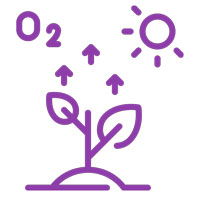At OverGrower, we use the spectrum control technology to choose the best composition of light spectrum irradiated by grow lights, which fits growing conditions of your crop.
Lamps contain many LEDs of various colors.
Each LED may glow brighter or dimmer due to LED regulated power consumption option.
LEDs on similar colors with regulation option are called Lamp Control Channel.
Each channel within the multi-channel lamp is regulated by dimming function.
The Light Spectrum Control Platform may easily integrate any standard commercial multi-channel lamps, as well as it may be implemented into any individual projects under the OverGrower Customization.
SPECTRO-01OG Spectrum Control Module may dim up to 6 grow light channels simultaneously.
With two and more control modules connected to one OverGrower device, you will have an opportunity to control the spectrum of one or several lamps with any number of control channels at a time!
Available for buying:
-
OverGrower advanced growing automation
-
SPECTRO-01OG Spectrum Control Module
-
LuxaVita multi-spectrum grow lights
to implement programmable lighting into completely controllable environment.
With full-fledged dynamic control of the light spectral composition!



























